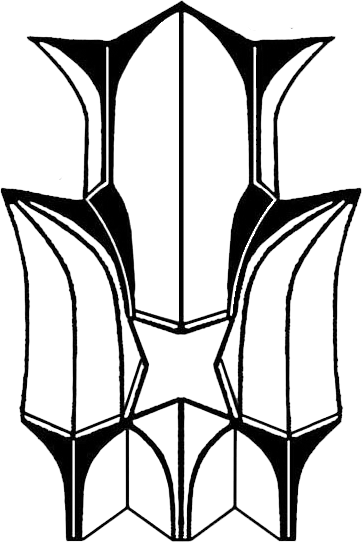?What is a Migraine
The mahogany or deer pie is one of the decorative elements of Iranian architecture. Mogharnas is a type of volumetric decoration and decoration that is used beneath the domes or the domes on the porches and porches. Brick or plaster or tile is used in the construction of the Mogharnas, which in each class of shafts move from their lower level to the door. In the niche there are bumps and indentations with various paintings.
Mogharnas is one of the decorative elements of architecture that plays an important role in beautifying Iranian buildings, especially mosques and tombs. Mogharnas are used as classrooms that are built together to decorate buildings or to gradually transform from one geometric form to another. Mogharnas can be considered as one of the effective elements in the construction of domes, which later lost its original use and was mostly used for decoration. Mogharnas usually work on submerged surfaces beneath the ceiling, but the placement of this decorative element can be on top of walls, ceilings, corners, and the like. Some architects have also used Mogharnas on the front of buildings and have mastered the skill of constructing them to the point that they do not allow the building to be heavy and put pressure on the foundation.
Mogharnas is a kind of ornamentation with dents and bumps that hang in the form of stalactites in some cases, and in fact this type of architectural decoration is a kind of volume decoration. In fact, Mogharnas is a three-dimensional embodiment of the geometric roles and nodes of Chinese architecture and Islamic art.
The application of Mogharnas grew mainly in Islamic architecture in Iran and in the Islamic and Arab countries.
Mogharnas is divided into two categories:
Front Mogharnas:
There are Mogharnas, which are self-made materials, and, ultimately, without any bricks or plaster, the exterior surfaces adorn the exterior of the building and are extremely robust.
Mogharnas overlap:
Apart from the main materials used in the building, plaster and brick and stone are used on the inside and outside surfaces. And often in several rows, two to five or more, overlapping, with moderate stability.
Suspended Mogharnas:
It is similar to limestone prisms hung in caves, which are called stalactites, and are often adhered to different surfaces such as: gypsum, pottery, tile, etc., and appear to have little stability. Are.
Honeycomb Mogharnas:
They resemble a bee’s nest and, on the whole, small hives, appearing to resemble suspended Mogharnas.
In fieldwork, projects such as ball, illumination, motions and all sorts of designs and roles of different countries can be accommodated. One can fill a field of roses, myrrh, cloves, etc. In the margins, designs such as geranium, illumination, harp and cast iron, mahogany and a variety of designs and roles of countries such as Greece, France, Egypt and … can be worked. One can cover the margin with the mangroves. One branch of the grape tree can be plastered on a long path. , Whose grapes hang along the path in three dimensions from the branch. A beautiful chalkboard verses and sentences can be highlighted along the way with a chant.
How to work with plaster
In order to do plaster work for any style, we must first throw in the canvas. One of the most common methods of door hitching is to use a hook around most homes, as they decorate a berg in the middle of the roof area to hang the chandelier or jar, and decorate it with plaster. That is called a hook. The hook can also be made in other ways.
- With ordinary tools, they are circles inside each other and sometimes so-called eight pointed or less, and are basically punctuated by the master of the instrument.
- By embedding the hook around 2 cm in thickness, it will be shaped into a square, oval, or other form of tool.
- With a prominent plaster or flat plaster called a slab, which can be killed by the tool of a prominent oval in the form of a foliage and a string of dates, even inside the ellipse by the Safavid work.
4 – The top of the goat, sometimes hooked with a cast iron design and the enamel and London flower dooghus known as the goat.
2- Safavid highlights are the Safavid designs which are done with a combination of Abbasi flowers and Islamic flowers and leaves. Sometimes with the combination of Iranian and French work, this design can be done both flat and flat.
2- Qajar Highlighter This type of work is a blend of Iranian and French work that can be done both in a flat and flat design.
Occasionally this type of decoration is also done with highlights and plaster in the form of flowers and bushes, human faces and sunscreen.
Plaster Mogharnas or Train:
One of the most beautiful decorative elements is the stepped staircase and porch beneath the main cover of the arches and porches, like geometrical shapes and caverns, which are also referred to as poles.
Tile Molding and Molding with Tile:
The required gypsum mortar is prepared by means of the required mold which is known as the male mold, which is gritted on the back of the mold in question and is arranged in fine tiles and arranged with plaster or cement. They tighten the back of the tiles, installing the mold in the original place previously made with plaster.
